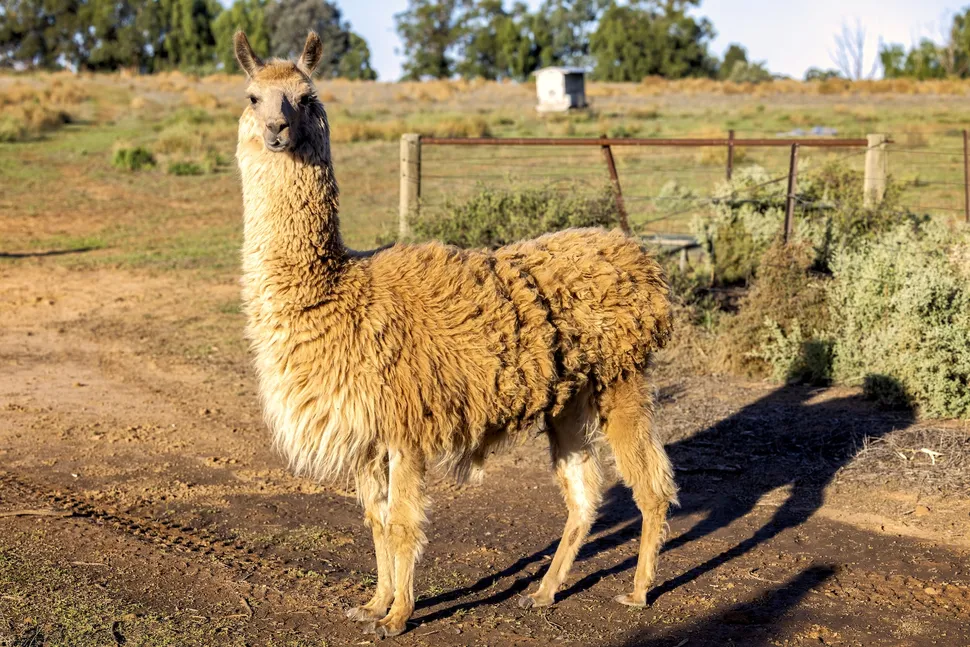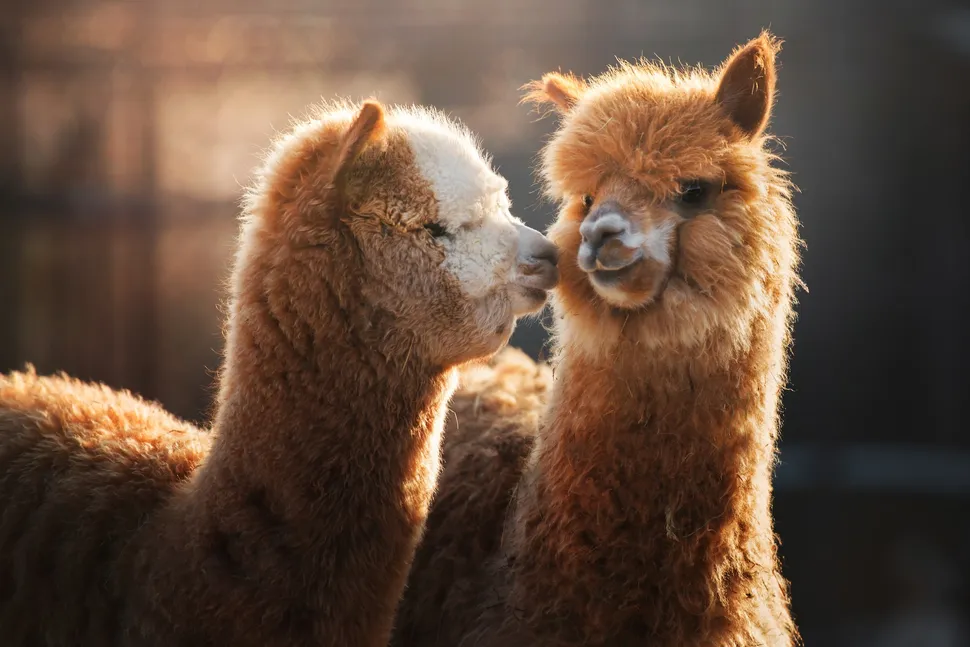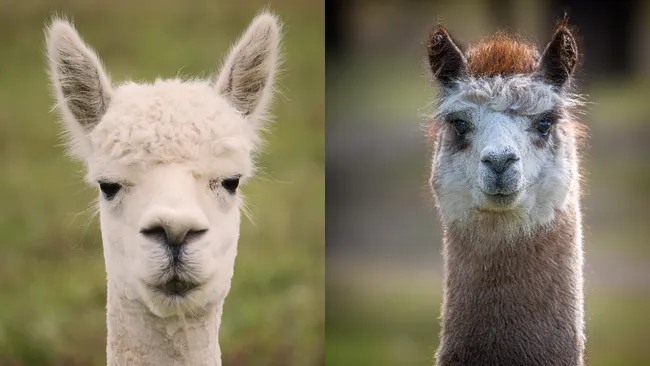Llamas are closely related to alpacas, so how can you tell these South American camelids apart?
Llamas vs Alpacas: What’s the Difference?
At first glance, llamas and alpacas look very similar. Both are fluffy, long-necked, four-legged animals that live in herds. But while they’re related, there are clear differences between llamas and alpacas.
Origins of Llamas and Alpacas
Llamas (Lama glama) and alpacas (Vicugna pacos) both belong to the camelid family — the same family as camels. According to experts, camelids originally evolved in North America. During the last Ice Age, some migrated across the Bering Land Bridge into Asia and later became dromedary and bactrian camels. Others moved south into Central and South America, where they evolved into llamas, alpacas, guanacos, and vicuñas.
Although often thought of as foreign animals in the United States, llamas and alpacas actually originated in North America millions of years ago before migrating south.

Domestication History
Research suggests guanacos were domesticated into llamas, while vicuñas were domesticated into alpacas around 6,000–7,000 years ago. Llamas were valued as pack animals by the Incas, while alpacas were prized for their soft, luxurious fiber used in textiles.
Key Differences Between Llamas and Alpacas
Size
- Llamas: 280–450 pounds (130–200 kg), about 45 inches (115 cm) tall at the shoulder.
- Alpacas: 100–175 pounds (45–80 kg), about 36 inches (90 cm) tall.
👉 Even the largest alpaca is much smaller than a llama.
Appearance
- Llamas: Long, banana-shaped ears and elongated faces. Their coats are coarse and better suited for rugs and ropes.
- Alpacas: Shorter noses and small, pear-shaped ears. Their fleece is silky, soft, and highly valued for clothing.

Temperament
- Llamas: Confident, alert, and often protective — making them good guard animals.
- Alpacas: Timid, gentle, and more likely to run from danger than confront it.
Purpose
- Llamas: Used as pack animals and sometimes for guarding livestock.
- Alpacas: Bred primarily for their high-quality fiber used in warm, soft textiles.
Are Llamas and Alpacas Friendly?
Both species are intelligent, trainable, and surprisingly gentle. Farmers often note how smart and personable they can be once accustomed to people.
